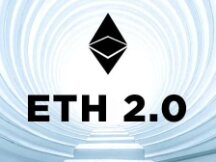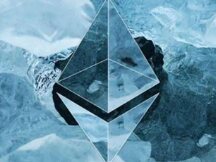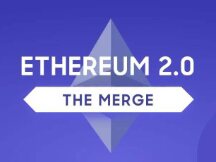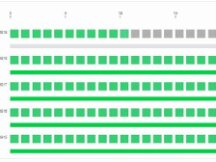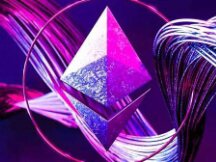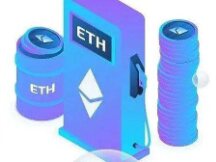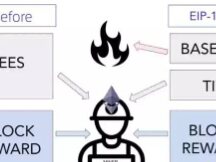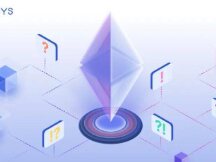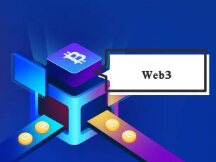Polkadot Parachain or Ethereum 2.0, who deserves more?
Last October, the cryptocurrency market faced many “carnivals”. BTC, ETH, DOT and other key gains have been peaking all the time, the Dogecoin series has also risen more and the market demand has been temporarily high. On November 4, ETH hit a new high of US $ 4,668 and DOT hit an all-time high of US $ 54,543. In this context, Polkadot officially launched Parachain Slot Auctions.
As we all know, the blockchain 'impossible triangle' issue has been associated and hampered the development of various public channels. As a featured project with the grand vision of Web3.0, Polkadot is often involved with links in the chain, but is also committed to solving blockchain scalability and decentralization issues. Ethereum also uses a lot of energy and money. The .0 update fixes many issues, including Ethereum network metrics.
Due to the origins of the creator and the context of the project, people often compare Polkadot to Ethereum, and there is also the idea that "Pocadadot will overtake Ethereum". With two big projects constantly evolving, who can realize the vision of building the next public channel? Who is the most qualified?
Promotion Polkadot et Ethereum
First, let's take a look at the current major upgrades and current developments on Polkadot and Ethereum.
The first publication of the Polkadot white paper in 2016 marked the start of the Polkadot project. In 2017, the Web3 Foundation was established and DOT started selling for the first time, then Polkadot was developed for 2-3 years and rarely heard in the market. In August 2019, Polkadot announced Kusama, a Canarian organization used to test Polkadot's governance, participation and capital sharing in real financial areas. In May 2020, Polkadot announced its first major smartphone competitor, marking the start of the startup process. At this point, Polkadot entered into competition with several public channels like Ethereum.
After more than a year of testing, Polkadot's Canary Network Kusama functionality is now in the early stages of development and the production site is stable. Significant improvements have also been made in improving Polkadot's important ecological and ecological activities. Around the last year, Polkadot made the switch to NPoS Proof of Stake procedures, DOT versioning and loading capabilities, Substrate 2.0 release, and key features. . another one.
Moreover, due to the different models of Polkadot, Parachain Slot Auction has become a very popular industry in the past two years. Since last October, the Kusama tournament has also moved up to the same level and the 13th tournament is over. 11 projects of which Acala and Bifrost have become the parachain of Kusama. To date, KSM's total revenue related to Kusama Parachain slots and lenders has reached KSM 2.53 million, or 21.8% of total advertising. Polkadot also announced that the auction will begin on November 11. A lot of work is already being done for the Polkadot auctions. Ouyi platform launched the competition very early, users can participate in the bidding process for free and enjoy Ouyi platform DOT rewards and bipartite project rewards. .

Source: Ou Yi-Earn coin / DeFi-Parachain Slot Machine Auction
Ethereum, a leader in public channels, has had its ups and downs since growing in 2014, seeing the craze for 1CO, DeFi Summer, and NFT explode for seven years. Currently, Ethereum is in the "long" phase of the planning process and is working hard to complete the Eth2.0 upgrade.
Following the announcement of the Beacon Chain in December 2020, Ethereum has been transformed into Stake Proof (PoS). This new PoS system is part of a complete network upgrade to Ethereum 2.0 and is now fully functional. As of November 3, more than 250,000 employees have benefited from BeaconChain, with a total of 8.04 million ETH injected into Ethereum 2.0, and the cost of on-board connectivity was even higher, 96% last month.

Source : BeaconScan
In August of this year, Ethereum completed a major overhaul in London to improve trading costs. Over 744,000 ETH have been damaged so far. On the other hand, Layer 2 solutions like Ethereum-based stacking are also evolving rapidly. According to information as of November 3, according to data from L2BEAT, the total Ethereum Layer 2 shutdown was $ 4.94 billion, a record high. Among them, the most important market share is the expansion of Arbitrum, accounting for 59.21%. Advances in Layer 2 technology are key to solving Ethereum's problems before announcing links in the chain. Going forward, Ethereum will focus on decentralization from phase 1, phase 2 will expand and innovate, both to improve the Ethereum network experience.
So, with two options going well, who will be better than Polkadot's Parachain and Ethereum 2.0 in the next public race?
Polkadot against Ethereum 2.0
First of all, you need to understand the similarities and differences between Polkadot and Ethereum 2.0.
As for the context of the project, Polkadot and Ethereum both have a bunch of intellectuals and history experts, so I won't repeat them here. One is the global smart contract platform and the other is the platform for the future multi-chain interconnection. Both platforms are designed to help developers develop business applications, and both are designed to solve problems with success-based scaling strategies. . Scalability issues on blockchain networks. Specifically, in Ethereum 2.0 each thread of execution is called a fragment, and in Polkadot it is called a chain or a chain.
Polkadot has developed a double model of "chain link chain and chain link chain" to achieve a chain saw cut with the difference of a multiple chain chain. This model allows Polkadot to send data to all blockchains, knowing the movement of assets and information on each chain. The Parachain of Polkadot relates to chain links, which serve a variety of industries and then communicate through chain links.

Ethereum 2.0 is a difficult update to Ethereum in the process of transitioning to Serenity, which will be improved in three ways: sharding, proof of stake (PoS) approval mechanism, and new EVM. Most important. Ethereum 2.0 splits the Ethereum network into multiple shards (supports 1024 shards), enhancing the power of Ethereum across multiple shards. The fragment chain is the data layer and each fragment corresponds to an equal chain of Polkadot as a subnet. As part of the integration process, the beacon chain is responsible for maintaining the integrity of Ethereum 2.0 and the communication of the various sub-shards in the system, which is similar to the Polkadot network relay chain.

Eth2.0 fragmentation diagram
Although Polkadot and Ethereum 2.0 have similarities in all versions, you can see that there are significant differences in the content of the two. From the two diagrams above, you can see that Polkadot is the basis for the interaction of different machines, for example Parachain, and Ethereum 2.0 is the same system, the connection basis of each fragment. Ethereum 2.0 is paying more attention to itself and building a solid foundation for delivering multiple DApp ecosystems.
Additionally, there are significant differences in the design goals and approvals of the two. Polkadot's goal is to complete the chain with horizontal parallel chain scaling to help people design and integrate blockchains to solve performance issues. . . . Ethereum 2.0's design is primarily focused on past performance and issues. In terms of consensus, Ethereum 2.0 uses the PoS mechanism and Polkadot uses the NPo mechanism. Here is the main difference between Polkaworld and Ethereum, formerly written by Polkaworld for the use of readers:

Source : Polka World
Since its inception, many Polkadot enthusiasts believed that Polkadot had a great vision based on Web3.0.
Can Polkadot own Ethereum?
Now back to the question we want to talk about: Can Polkadot do better than Ethereum in the future?
Both have their own strengths as a public channel system, and there is no doubt that they will be really competitive. Ethereum's greatest strength is its large ecosystem and mature developer community, which has established itself as a leader in public channels. The famous craze for DeFi, NFT, and Gamefi all started on Ethereum. In these contexts, ETH also retains significant business gains as traditional symbols. So at the core network level now, Ethereum has improved.
However, on the other hand, scalability issues and high fuel costs faced by Ethereum have impacted its growth and still provide opportunities for other industries to overtake it. As a result, more and more new jobs follow one another, according to Polkadot, in search of more and more exchanges. The Parachain-based substrate not only can design its own chain, but also has its own business model, and enjoys 4 characteristics (advantages): no interference, improvement, no restriction and no cost. Here we have to mention the difference between Polkadot and Ethereum chain management. Polkadot quick response and quick update. New technologies or recommendations can be added to Polkadot, all of which are used by community voting. However, once he is able to write and send announcements to the Ethereum public, those will ultimately go to the critical development team for review and vote.
According to data from Polkaproject, there are now hundreds of apps and processes in the Polkadot ecosystem, including various activities based on Substrade, such as cryptocurrency wallets, validators, forums, browsers and private , bridges, DeFi, smart contracts, etc. So, Polkadot currently poses a "threat" to Ethereum primarily by competing for good ecosystem functions, including the construction phase. Even Ethereum lead developer Afri Schoedon earlier this year said Polkadot is much faster than Ethereum, and even brings something Polkadot only takes in a quiet phase of Ethereum (final version of his bet at hard fork level). This shows that the benefits of Polkadot should not be underestimated.
Polkadot's greatest strength in its construction equipment, Substrate. The substrate is the basis for improvements in the development of Polkadot compatible blockchains, allowing manufacturers to quickly create blockchains within a short period of time, thereby reducing the number of blocks created. And effort is needed for the chain.
In addition, the two-layer "parallel chain-to-chain relay" process can provide high network security and scalability. Polkadot can not only run multiple blockchains, but also connect to Bitcoin and Ethereum in the future. After interconnecting the channels with the main blockchains, it would be better for Polkadot. Strictly speaking, Polkadot has the best performance, and when the Parachain system works well, a new era of crossed chains will open for us.
In essence, Polkadot and Ethereum are competitors, but the ultimate view of the two is different, you don't have to worry about whether Polkadot can outperform Ethereum, the result of Polkadot Parachain and Ethereum 2.0 will bring better knowledge and improvements to the blockchain. . In the short term, Polkadot could surpass Ethereum, and while it's still a long way off, the two should still be involved in multiple strings, long-term competition, and symbiosis.

Scan QR code with WeChat
